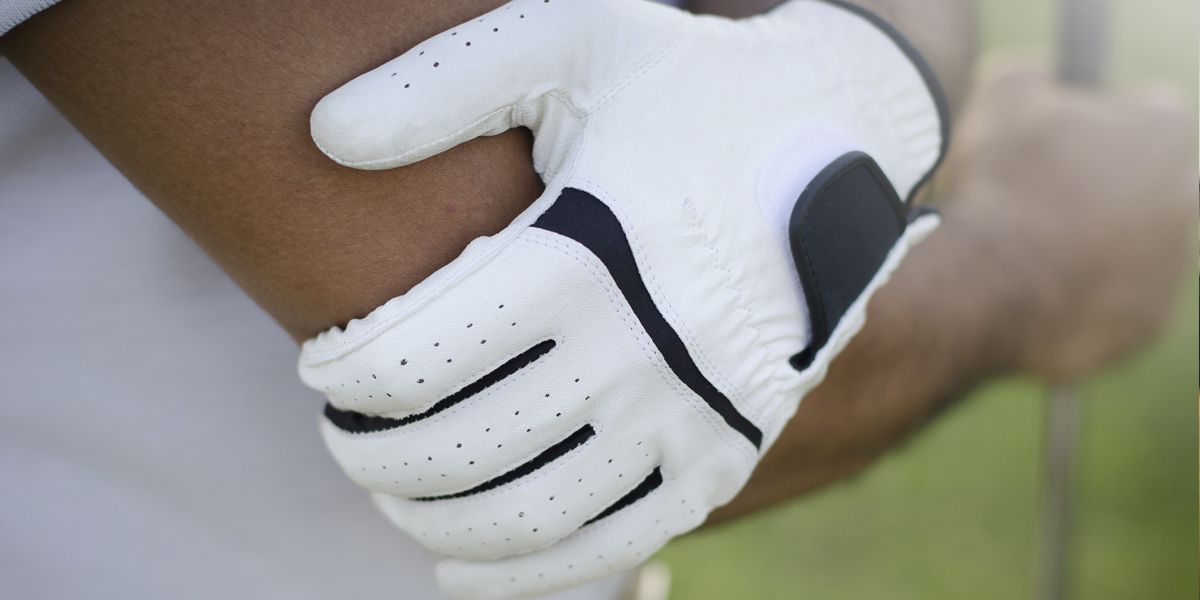Let's kick things off with a deep dive into the elbow. Now, you might be thinking, "The elbow? Really? Isn't that just the thing I'm not supposed to put on the dinner table?" Well, yes, but it's also so much more than that. The elbow is a complex joint that plays a crucial role in a wide range of activities. Whether you're lifting a pint to celebrate a win at your local pub's trivia night or swinging a golf club on a sunny Saturday afternoon, your elbow is there, working tirelessly behind the scenes.
Golfer's elbow, despite its name, is an equal opportunity affliction. It doesn't care if you're a seasoned pro who knows their birdies from their bogeys or a complete novice who thinks a "bogey" is something you find in a tissue. It's a form of tendinitis that causes pain on the inside of the elbow, and it's often caused by repeated exposure to high-velocity stress. So, it's not just golfers who are at risk, but anyone who regularly uses their arms in a forceful or repetitive way.
Tendons: A Tale of Strain and Pain
Now, let's turn our attention to tendons. These unsung heroes of our musculoskeletal system are the connective tissues that transmit force from muscles to bones. They're also responsible for absorbing external forces. Think of them as the shock absorbers of your body. When they're functioning well, you hardly notice them. But when they're not happy, you're not happy.
Tendons are viscoelastic, which means they have both viscous and elastic properties. This allows them to strain, deform, and relax under constant load, which is crucial for healing an irritated golfer's elbow. So, if you've been neglecting your tendons, it's time to give them the love and attention they deserve.
Golfer's Elbow: Not Just About The Swing
You might think that avoiding golfer's elbow is as simple as avoiding golf. But it's not that simple. The best way to avoid this pesky injury is to be an overall healthy human being. That means being physically active, eating nutritious foods, and staying hydrated. It's not rocket science, but it does require a bit of effort.
Strength training should be a part of your weekly routine. This doesn't mean you need to become a bodybuilder or spend hours at the gym every day. Even simple exercises like squats and push-ups can make a big difference. The key is to engage multiple joints simultaneously and to progressively increase the load over time.
Warming up before playing is also crucial. This doesn't need to be a long, drawn-out process. Even just a few minutes of light exercise can help prepare your body for the stresses of golf. So, before you take that first swing, take a few minutes to get your blood flowing and your muscles warmed up.
Rest and Ice... And Something Nice
If you're unlucky enough to develop golfer's elbow, don't just sit on the couch with an ice pack on your arm. Resting might help with the inflammation, but it won't do anything to strengthen the injured tissue. Instead, you need to load the tendon in order to promote recovery. This can be done through isometric exercises, which involve holding a muscle in a static position.
Isometric exercises are a great way to strengthen your tendons without putting too much strain on them. They involve holding a muscle in a static position, which allows the tendon to relax and repair itself. Two effective exercises for golfer's's elbow are Isometric PVC Pronations and Push-Up Isometrics.
In Isometric PVC Pronations, you hold a PVC pipe, stick, or even a golf club, and apply a rotating force, as if you're trying to rotate your palm to the floor. But here's the catch - it's an isometric exercise, so your joint isn't actually moving. You're just applying a constant force, which helps to strengthen and repair the tendon.
In Push-Up Isometrics, you sink down into the end range of a push-up and hold that position. This exercise loads the tendons in a holistic manner, which can be highly beneficial for healing golfer's elbow.
The Bottom Line: Keep Swinging
If you're a golfer and you're dealing with golfer's elbow, don't hang up your clubs just yet. As long as the pain allows, keep golfing and keep training. Tendons are adaptable, and they become stronger in response to the stresses we place on them. So keep swinging, keep training, and be a healthy human being. You'll be on the road to recovery in no time.
Life is like a game of golf. Sometimes you're in the rough, sometimes you're in the bunker, and sometimes you're right on the green. But no matter where you are, keep swinging. Because as the great Arnold Palmer once said, "The most rewarding things you do in life are often the ones that look like they cannot be done."
In the end, it's all about balance. Balancing your golf game with your health, your strength training with your rest days, and your pints at trivia night with your hydration. So keep swinging, keep laughing, and keep living.

